Reel to Reel Pinch Roller
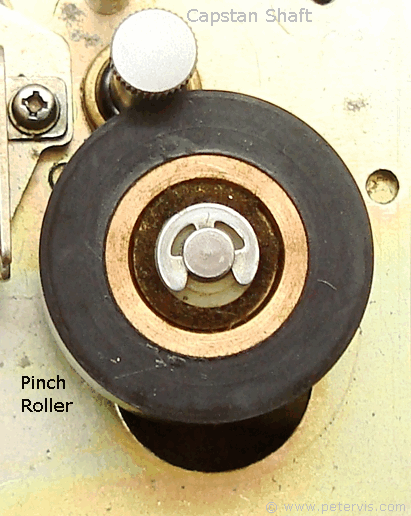
A pinch roller is a rubber wheel, which presses against the capstan shaft pulling the tape from the feed spool at a precise speed. The construction of a pinch roller consists of an aluminium hub with a brass inner ring forming the bearing. The outer layer of the hub is soft rubber, which pinches the tape in order to pull it. The pressure between the capstan shaft and the rubber is critical and usually calibrated at the factory. It is just enough to pull the tape, but not too much that it deforms it.
Retracting Roller
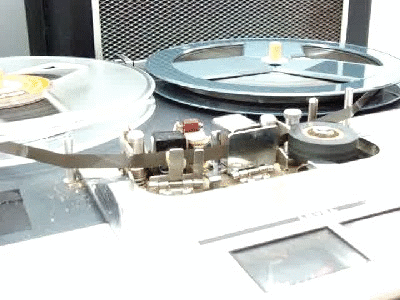
In this video, you can see that the pinch roller retracts during fast-forward, rewind, and stop operations.
Stop Mode
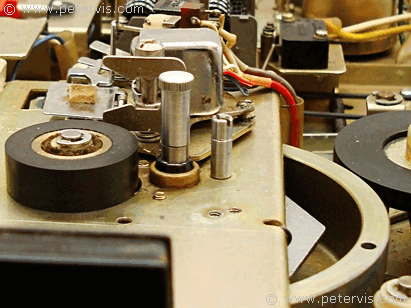
In stop mode, the mechanism retracts the pinch roller to facilitate easy threading of the tape. Usually the roller moves away from the capstan shaft and below the tape path to be out of the way.
Capstan Shaft
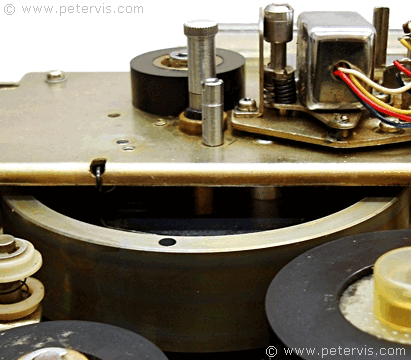
The capstan shaft connects to a large metal flywheel, which maintains a regular speed. The rotation of the shaft is such that the tape pulls out of the feed spool at a precise speed.
Worn Out
When the rubber wears out, the diameter of the roller reduces and the mechanical pressure it exerts against the capstan shaft lessens. This eventually results in the tape slipping, or not pulled at all. A replacement roller of the same diameter is usually required to correct this fault.
Cleaning the Roller
The rubber surface of the roller usually accumulates ferrous oxide, which results in the surface of the roller becoming shiny and slippery. The roller requires cleaning on a regular basis for the proper operation of the unit. The bearing of the roller also requires lubrication with machine oil. The amount of cleaning and lubrication depends upon the use; however, when the roller surface becomes brown and shiny, that is usually the time to clean it.
There are many online firms selling generic replacements and they are worth it. Providing the roller is of the correct diameter, and thickness, and has the correct mounting system, it may work! You will need a micrometer to measure the diameter of the mounting shaft, and the diameter and thickness of the roller.
Uneven Surface
The most common reason for an uneven pinch roller is when it is stored whilst in play mode. Over a long term, the capstan can leave an indentation in the rubber, which can cause problems. There are also instances where the roller wear is uneven. This is usually due to poor alignment of the mounting arm.
Play Mode
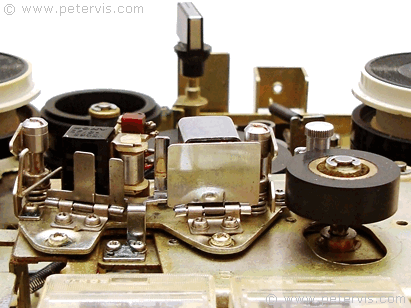
In play mode, the pinch roller engages with the capstan shaft.

The roller is also elevated, as shown in this photograph.
This Article Continues...
Sony TC-330Sony TC-330 Inside View
Sony TC-330 Repair
Sony TC-330 Drive Belt
Sony TC-330 Front Controls and Sockets
Sony TC-330 Audio Sockets
Sony TC-330 Cassette Heads
Sony TC-330 Cassette Transport Mechanism
Sony TC-330 Case
Sony TC-330 Level Meters
Sony TC-330 Speakers
Sony TC-330 Tape Path Alignment
Sony TC-330 PCB
Sony TC-330 Power Supply
Sony TC-330 Underside
Related Articles
Reel to Reel Pinch RollerReel to Reel Motor Run Capacitor
Reel to Reel Tape Speeds
Reel to Reel Track Formats
Reel to Reel to CD
How to Thread a Reel-to-Reel Tape Recorder
Speaker Repair and Restoration